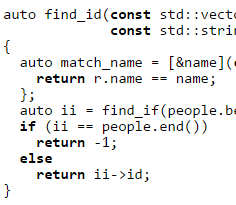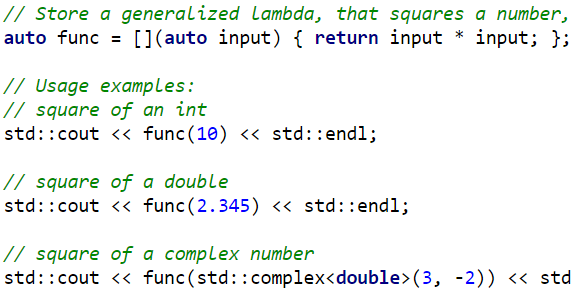Embedding Lisp in C++: A Recipe -- Chris Kohlhepp
 Look at this image again: That's C++ in Lisp. And that's just for starters...
Look at this image again: That's C++ in Lisp. And that's just for starters...
Embedding Lisp in C++ -- A Recipe
by Chris Kohlhepp
As a teaser, consider this from midway through the article:
Just to recap, so far we have seen C++ calling in-line Lisp; Lisp calling C++; a Lisp REPL inside of a C++ process; a full symbolic Lisp debugger inside of C++; byte compiled and interpreted mode of execution; as well as trivial Live-Programming.
We are yet to see full integration with Lisp’s package management system and fully compiled Lisp code inside of C++...

 Recently on Tales of C++:
Recently on Tales of C++: Today on Dr. Dobb's:
Today on Dr. Dobb's:
 Building on recent C++11 lambda tutorials we've linked to recently, here's one about the brand-new lambda features in C++14:
Building on recent C++11 lambda tutorials we've linked to recently, here's one about the brand-new lambda features in C++14: Here's a recent series that just got a new instalment today: It introduces template basics in a nicely explained and accessible way suitable for a gentle introduction, and then going on to progressively help the reader develop stronger template muscles.
Here's a recent series that just got a new instalment today: It introduces template basics in a nicely explained and accessible way suitable for a gentle introduction, and then going on to progressively help the reader develop stronger template muscles. More rapid-fire "now write this using lambdas" problem-solution drill with Sumant Tambe:
More rapid-fire "now write this using lambdas" problem-solution drill with Sumant Tambe: